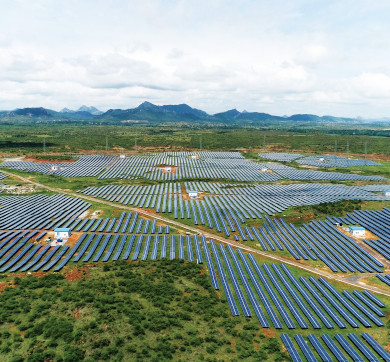August 2025 | 2431 words | 9-minute read
In the year 2000, Tata Power needed a solution. They had miles of optical fibre laid out for their energy operations in Mumbai. They wanted to monetise it for the then nascent bandwidth services market and were looking for partners who could help them do it. Tejas Networks, which had just been set up, stepped in and offered to build an end-to-end optical network for the company.
For much of the work, Tejas Networks implemented a solution using products from a larger manufacturer, but procuring one critical product would demand a disproportionate investment. Instead, the company simply got to work, innovated, designed and manufactured the required carrier-class product — which aggregated multiple 2Mbps electrical signals and mapped them to a 155Mbps optical signal — from scratch within six months. This was the TJ100, which not only addressed Tata Power’s needs but also set the tone for a culture of research-driven innovation.
Twenty-five years later, Tejas Networks is now part of the Tata Group and has completed one of the largest 4G/5G deployment projects in the world — one lakh cell sites across India — for BSNL. The company won the INR 7,492-crore deal as part of a consortium led by Tata Consultancy Services (TCS) and completed it in a record time of 18 months, by the end of FY25. As a result, Tejas Networks reported an all-time high net revenue of INR 8,923 crore (261% year-on-year increase) and net profit of INR 447 crore (609% surge) in FY25.
The BSNL project utilises Tejas Networks’ indigenous 4G/5G radio technology stack (components needed to run a mobile network), placing India among the few nations with fully homegrown mobile network technology. In 2023, the company, one of the few fully integrated providers of telecom equipment in India, secured an add-on order worth INR 1,526 crore for 18,685 BSNL sites.
We have a strong R&D focus, a range of products in production and in the pipeline, an extended manufacturing ecosystem, government support and, most importantly, the brand strength of the Tata group. This will help us grow stronger not only in India but also reach global markets more effectively. - Arnob Roy
The launch pad
Telecommunications is an ever-evolving field, and the founders of Tejas Networks — Sanjay Nayak, Arnob Roy, and Dr Kumar N Sivarajan — realised early on the potential to develop globally competitive technology products in India that also addressed the country’s unique challenges. With networks becoming critical highways for a technology-driven future, the company set out to replace costly imports with innovative, indigenous solutions. Their mission? “To be India’s first global telecom network and products company with an end-to-end suite of products,” says Mr Nayak.
“Tejas Networks emerged from the desire to build networking products in India,” adds Mr Nayak. “The telecom revolution was evolving at a rapid pace at that time, but most of the products were imported, and often over-designed for the need they were serving. We wanted to provide a viable and cost-effective alternative that was world-class, future-proof and yet home-grown. We were one of the first Indian technology product start-ups and continue to be one of the few homegrown ones,” he adds, underlining the challenges in the telecom product market as well as the company’s resilience.
Focus on R&D
With its in-house R&D, the company could build innovative products that provide efficient solutions for the evolving needs of new generation networks, not only in India but also in global markets. Some of these include efficient solutions for network migration as they transition from 2G to 4G/5G, modernising networks from voice to data-carrying infrastructure, converged solutions for multiple broadband access technologies, and cost-effective capacity upgrades of optical backbone networks.
These solutions also accelerated the iteration and deployment cycle, enhancing the company’s appeal through greater agility and cost-efficiency. Its investments in R&D — INR 557 crore in FY25 — have resulted in 525+ global patents and 350+ semiconductor intellectual property blocks used in custom chip designs. This focus on technology keeps it agile, adaptive and competitive, evolving from offering optical networking solutions to delivering advanced 4G and 5G connectivity solutions.
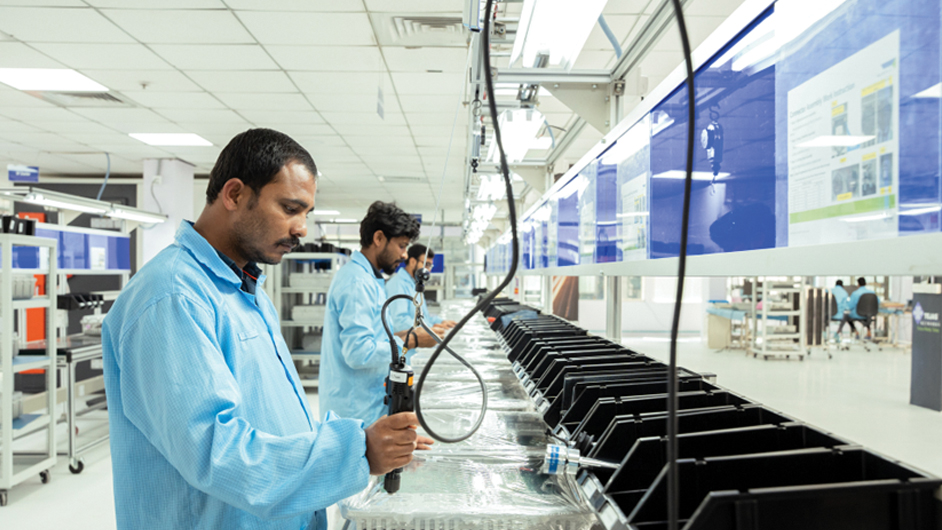
Its comprehensive portfolio now includes wireless (4G/5G), fibre access (FTTX), optical transport (PTN, OTN, DWDM), switching and routing (Ethernet, IP/MPLS), and the company is strengthening its capabilities in related technology domains such as satellite communications, direct-to-mobile broadcast and semiconductor design. Today, its reliable, scalable, and efficient products power 500+ networks in 75+ countries — the invisible infrastructure that connects every device to another.
The BSNL project
The importance of Tejas Networks’ indigenous products and services is best illustrated with its work on the BSNL project, where it delivers cutting-edge technology on an immense scale, across both urban and rural India. “The government has a bold vision for internet access; it wants to reach as many citizens as possible and not limit high-end services to a select few,” says Dr Sivarajan, Co-founder and Chief Technology Officer, Tejas Networks, who oversaw the product development. “It made sense to upgrade the existing BSNL network, given its already established coverage in rural India.”
For this country-wide migration to 4G/ 5G, a key government requirement was that the entire solution needed to be homegrown, as telecommunications is critical infrastructure. “Many of the 1 lakh+ sites are in remote locations, from intense desert heat to high-altitude cold,” says Dr Sivarajan. “Given the indigenous mandate, our products were designed, developed and assembled in-house. It is a testament to the excellence and innovation prowess of our R&D team that our products passed BSNL’s rigorous 18-month field testing.”

Due to the project’s scale and the emphasis on secure, reliable technology, the government wanted a partner with full ownership of intellectual property rights. “If you look at a mobile tower by BSNL or any operator, you can see the antenna, which is a vertical box at the top, a weather-protected squarish box behind it called the remote radio head (RRH), and another box at the base of the tower, which we call the baseband unit (BBU),” explains Mr Roy. “Simply put, the antenna traps the electromagnetic waves from your phone, be they voice or data. The RRH converts them into digital signals, and the BBU processes these signals before forwarding this ‘traffic’ over an optical backhaul network to what is called the mobile core located at BSNL’s data centres. Tejas Networks supplies the hardware and software for the RRH, BBU and backhaul components in BSNL’s 4G/5G network.”
The mobile core, a sophisticated software suite developed by the Centre for Development of Telematics, Government of India, directs a request to wherever it is supposed to go. There are other critical software as well, that include operating systems, business and management layers, billing and other applications. All these are managed by TCS, the project’s lead partner and system integrator.
A converged future
“In the not-so-distant future, optical fibre is likely to reach every home, much like electricity,” says Dr Sivarajan. “The physics of optical fibre makes it an attractive proposition — you are basically using light to transmit data through glass fibre, a refractive medium. A single optical fibre pair can combine multiple wavelengths simultaneously, and each wavelength is capable of carrying terabits of data. In the last mile, a Wi-Fi or wireless network can bring data to your devices.”
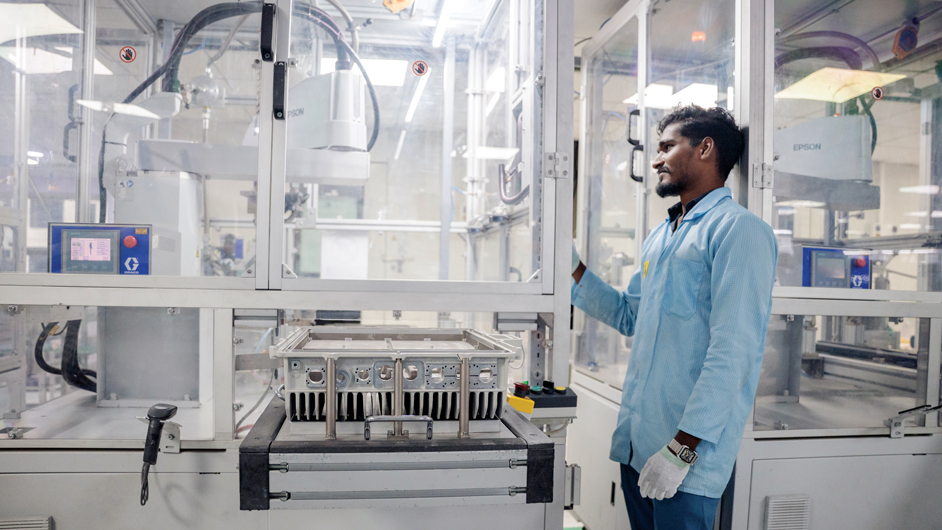
He adds, “However, due to a variety of reasons, such as difficult terrains, accessibility challenges, and right-of-way issues associated with optical fibre deployments, wireless connectivity options serve as cost-effective alternatives in many situations. Hence, telecom operators tend to use a combination of optical fibre, wireless 4G/5G/6G and satellite networks to achieve network ubiquity, which calls for a wide range of wireless and wireline products that help with the interplay.”
"In the not-so-distant future, optical fibre is likely to reach every home, much like electricity" Dr Sivarajan
This creates an immense opportunity for Tejas Networks, which started with optical networking products and has added significant capabilities in diverse wireless and wireline networking technologies. The acquisition of Saankhya Labs in 2022 unlocked new opportunities in satellite communications broadcast and fabless semiconductor design capabilities, propelling the company into a league of its own.
“The convergence of multiple technologies is our secret sauce,” explains Mr Roy. “Even our global competitors do not have all these product capabilities under one roof. For example, for the BSNL project, we deployed what we call the ‘ultra-converged transport product’, where mobile broadband (4G/5G baseband), fibre broadband and optical transport technologies are all integrated in one compact shelf. Most other companies would require different stand-alone products for each of these applications. This makes Tejas Networks an attractive proposition for customers.”
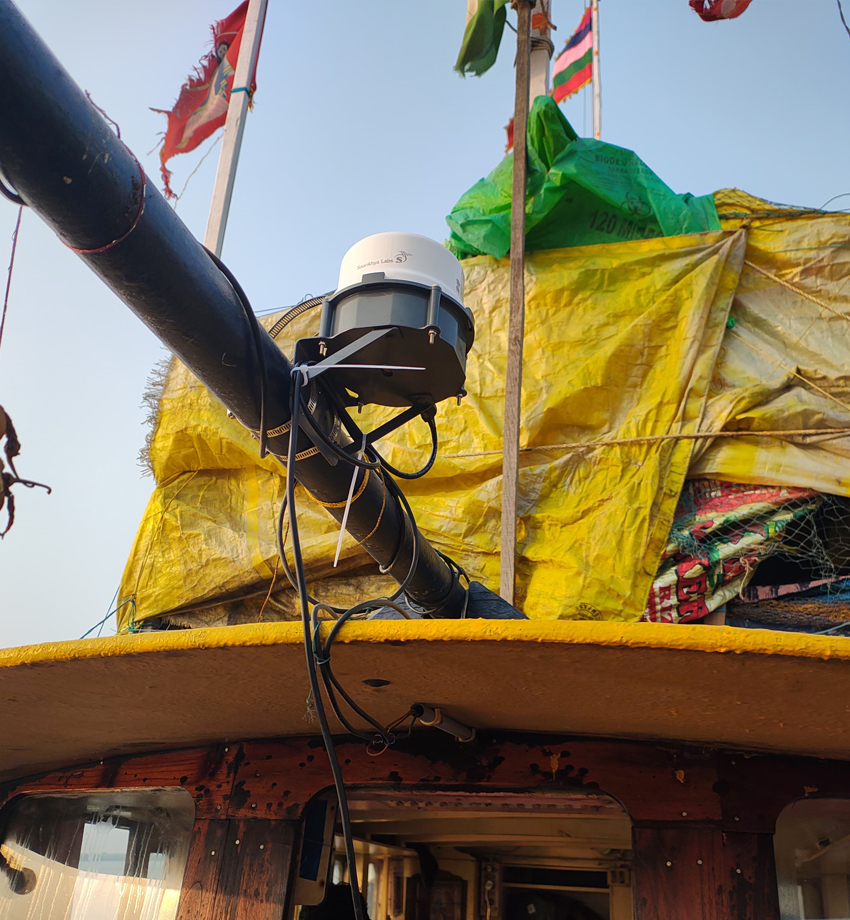
The India play
Tejas Networks’ contribution towards a digitised India extends far beyond the BSNL project.
BharatNet: It is a key supplier for one of the world’s biggest rural broadband projects. Its gigabit passive optical network (GPON) equipment has been rolled out in 1 lakh+ gram panchayats. Phase 3 will connect ~7 lakh villages using solar-powered optical network terminals built for low power and rugged areas.
Vessel tracking: In FY24, Tejas Networks won an INR 96.42 crore order from India’s Department of Space for its Tejas Mobile Satellite Terminals, built using its software-defined radio chipsets. They are installed on 33,000+ coastal fishing vessels, enabling real-time communication, location tracking, boundary alerts, and weather alerts. There are plans to deploy them on ~45,000 boats, forming one of the largest satellite-IoT networks.
Switching and routing: Its switching platforms — devices to manage and direct data traffic — are used to develop smart and safe cities. They are used to control public cameras, Wi-Fi networks, announcement systems, and sensors, and connect them all into one large command centre.
RailWire: It enabled high-speed wireless broadband services at 4,700+ rural Indian railway stations.
Direct-to-mobile (D2M) education project:
The company has successfully integrated D2M capability into Intel-powered laptops. Terrestrial TV signals are used to deliver educational live TV, video, audio and text messages directly to mobile devices without the need for Wi-Fi or internet service, providing access to education in connectivity-underserved areas.
Indigenous manufacturing boost: Tejas Networks follows a scalable, asset light model by manufacturing in India, partnering with electronic manufacturing services companies. “Initially, we relied on partners outside India, because the capability to deliver on precision was not available,” says Mr Roy. “But over time, we have moved completely to Indian providers.”
Software-defined HardwareTM
What sets Tejas Networks apart from other global players is its game-changing Software-defined Hardware™ architecture. This involves designing programmable telecom hardware, like routers, switches, and optical devices, in a way that their functions can be controlled and updated through software. This system was put in practice from its very first product — the TJ100, a compact, modular optical networking platform for voice and data services.
This Software-defined Hardware™ philosophy ensures Tejas Networks’ products are cost-effective and more importantly, future-proof. Their open architecture enables the hardware to keep pace with changing requirements as networks scale up and become more efficient, and supports implementation of advanced software.
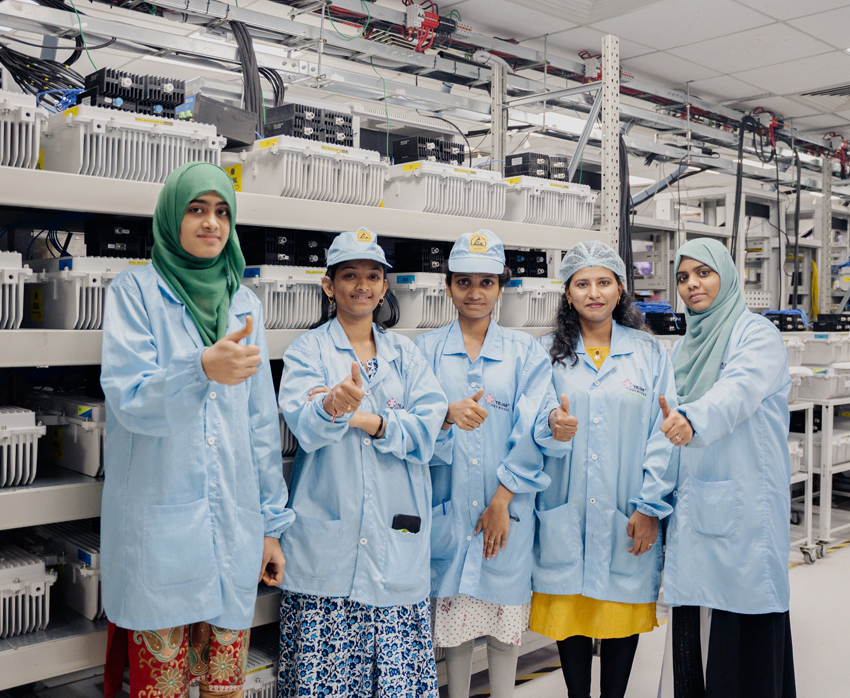
Growth trajectory
Tejas Networks has witnessed steady growth since its founding in 2000. The past three fiscal years show a sharp rise in operational revenue — from INR 922 crore in FY23 to INR 8,923 crore in FY25, a ~10x increase. While R&D spends have increased, overall revenue has grown even faster, pointing to enhanced operational efficiency. The company’s EBIT has improved, rising from a loss of INR 104 crore in FY23 to a profit of INR 905 crore in FY25. Similarly, profit after tax (PAT) also saw a strong turnaround, from a INR 36 crore loss to a profit of INR 447 crore, with a 5% PAT margin.
Its robust growth in FY25 is attributed to the completion of the BSNL project it secured in 2023 — Tejas Networks was the sole supplier of 4G/5G radio access network (RAN) equipment covering 1 lakh+ sites.
“In the initial years, our products were focused towards providing wireline network solutions,” says Mr Roy, Co-founder, Executive Director and Chief Operating Officer. “With the addition of wireless products to our portfolio, through the BSNL project, our addressable market and business have grown significantly.”
Innovation at scale
With a focus on deep technology and R&D, Tejas Networks has a rich portfolio of 525+ global patents and has deployed 10 lakh+ systems across the globe. Given the complexity and number of components that go into each product, the company does the final assembly in its own facility. “Some products have certain common components and almost all components we use have multiple suppliers,” explains Mr Roy. “In addition, we rigorously test each product for performance at various stages of production.” The company maintains tight control over product design and quality, ensuring seamless performance across multiple technology generations — from 2G and 3G to 4G and 5G — without network disruptions.
Its hardware designs leverage next-generation programmable chipsets and reconfigurable circuitry, supported by both commercial and in-house automation tools. A unique feature of its products is their common software code base, consisting of over three million lines of code. This ensures consistency and quality across all products, from access devices to large switches. This approach also facilitates global adaptability with incremental country-specific modifications.
In the initial years, our products were focused towards providing wireline network solutions. With the addition of wireless products to our portfolio, through the BSNL project, our addressable market and business have grown significantly. - Arnob Roy
Products undergo extensive testing in hardware labs, including simulations of real-time field scenarios using 1,000km+ of optical fibre. They are also subjected to extreme environmental testing and functional verification. The company’s meticulous R&D process has played a pivotal role in transforming India’s telecom landscape and positioned it as a disruptor, challenging global giants with made-in-India innovations.
The path ahead
The company is now aiming to become one of “the top 10 communication network product companies in five to six years,” says Mr Roy, highlighting its robust foundation. “We have a strong R&D focus, a range of products in production and in the pipeline, an extended manufacturing ecosystem, government support and, most importantly, the brand strength of the Tata group. This will help us grow stronger not only in India but also reach global markets more effectively.”
As connectivity becomes a necessity for business and modern life, and the demand for high-speed, immersive internet experiences grows exponentially, Tejas Networks is at the right place to deliver indigenous, future-proof and cost-effective products at scale for India and the world.
- Haroon Bijli

































